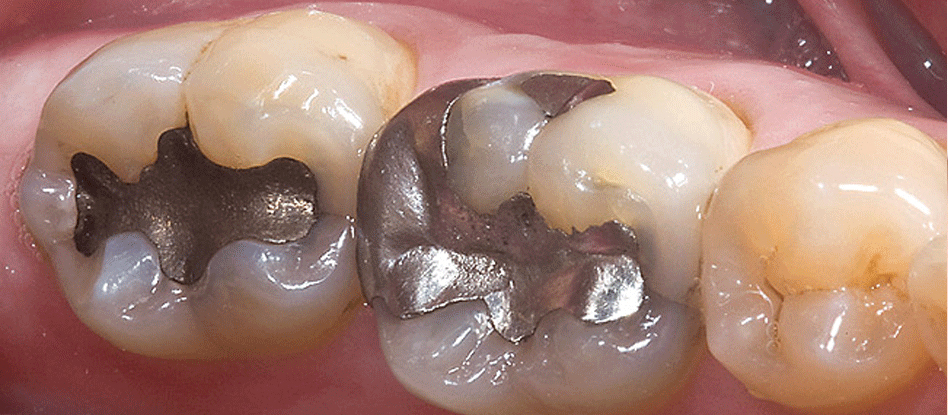- +91 9869419401 022 2544 1868
TOOTH FILLINGS
To treat a cavity your dentist will remove the decayed portion of thetooth and then "fill" the area on the tooth where the decayed material was removed.
Silver Fillings (Amalgams)
Advantages of silver fillings:
- Durability -- silver fillings last at least 10 to 15 years and usually outlasts composite (tooth-colored) fillings.
- Strength -- can withstand chewing forces
- Expense -- is less expensive than composite fillings
Disadvantages of silver fillings:
- Poor aesthetics -- silver fillings don't match the color of natural teeth.
- Destruction of more tooth structure -- healthy parts of the tooth must often be removed to make a space large enough to hold the amalgam filling.
- Discoloration -- amalgam fillings can create a grayish hue to the surrounding tooth structure.
- Cracks and fractures -- although all teeth expand and contract in the presence of hot and cold liquids, which ultimately can cause the tooth to crack or fracture, amalgam material -- in comparison with other filling materials -- may experience a wider degree of expansion and contraction and lead to a higher incidence of cracks andfractures.
- Allergic reactions -- a small percentage of people, approximately 1%, are allergic to the mercury present in amalgam restorations.

Tooth-colored Composites
Advantages of composites:
- Aesthetics -- the shade/color of the composite fillings can be closely matched to the color of existing teeth. Composites are particularly well suited for use in front teeth or visible parts of teeth.
- Bonding to tooth structure -- composite fillings actually chemically bond to tooth structure, providing further support.
- Versatility -- in addition to use as a filling material for decay, composite fillings can also be used to repair chipped, broken, or worn teeth.
- Tooth-sparing preparation -- sometimes less tooth structure needs to be removed compared with amalgam fillings when removing decay and preparing for the filling
Glass ionomer
It is made of acrylic and a specific type of glass material. This material is most commonly used for fillings below the gum line and for fillings in young children (drilling is still required). Glass ionomers release fluoride, which can help protect the tooth from further decay. However, this material is weaker than composite resin and is more susceptible to wear and prone to fracture. Glass ionomer generally lasts five years or less with costs comparable to composite resin.



